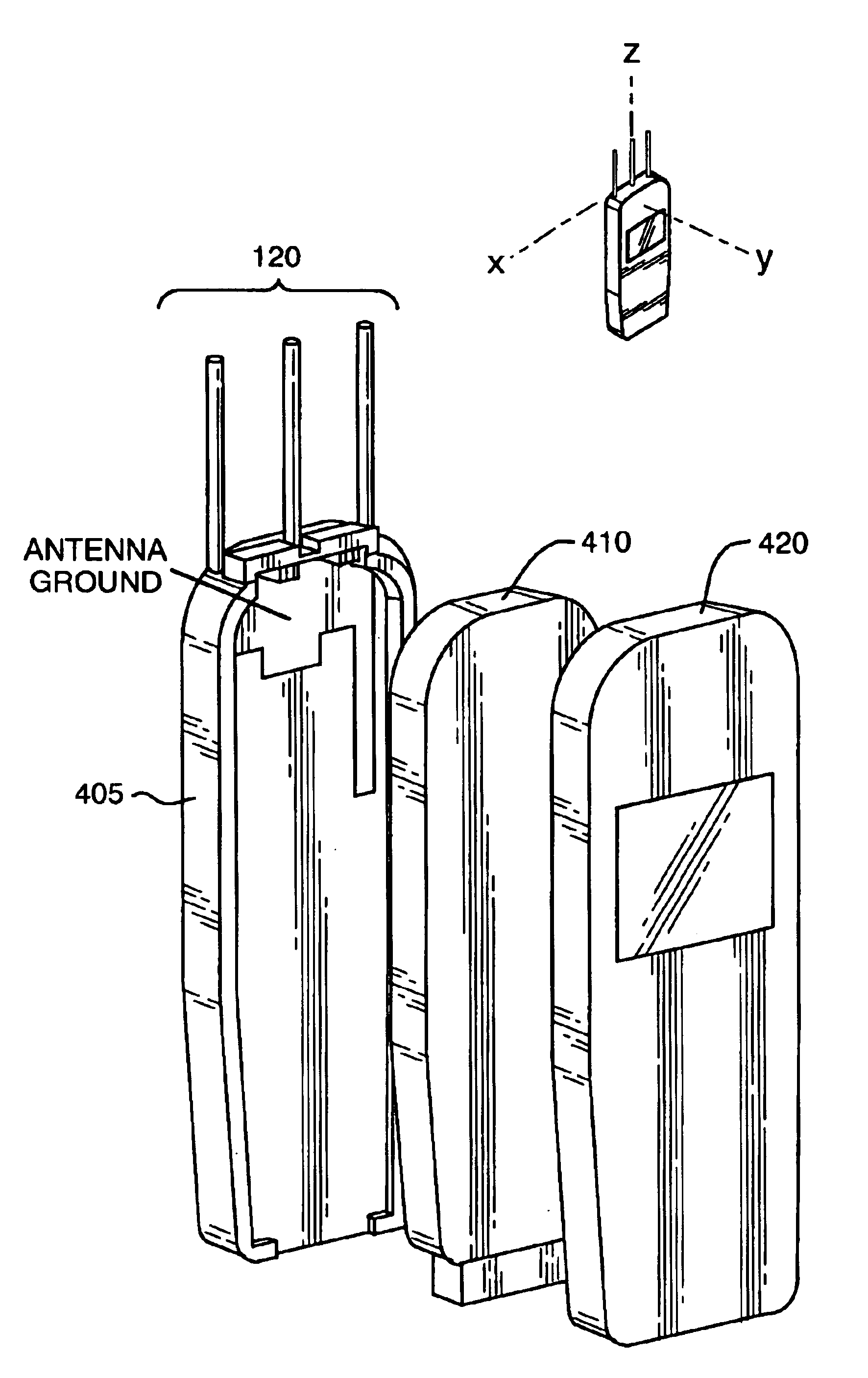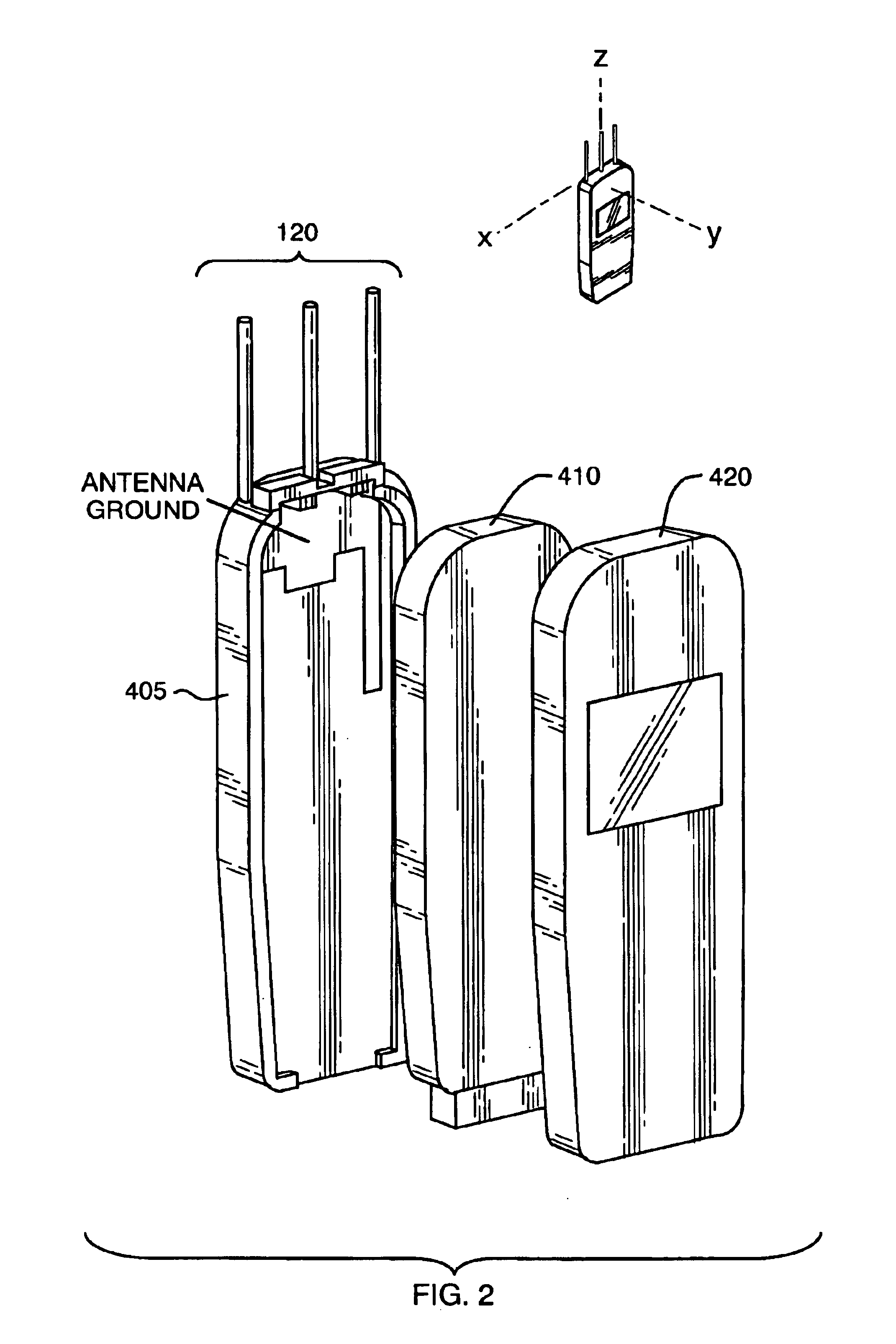Mobile communication handset with adaptive antenna array
a mobile communication and antenna array technology, applied in diversity/multi-antenna systems, polarisation/directional diversity, resonant antennas, etc., can solve problems such as multi-path fading, radio signal transmitted from a sender (either a base station or mobile subscriber unit), interference, fading or dropout of received signals, etc., to minimize size and manufacturing complexity, the effect of maximizing the antenna performan
- Summary
- Abstract
- Description
- Claims
- Application Information
AI Technical Summary
Benefits of technology
Problems solved by technology
Method used
Image
Examples
Embodiment Construction
FIGS. 1A, 1B, 1C are high level schematic diagrams of wireless communication devices incorporating a three-element adaptive directional antenna array according to various embodiments. In general, the devices 100 are some form of wireless communications device, such as a mobile communication handset (e.g., cellular handset) or a personal digital assistant (e.g., Palm Pilot). Each device 100 includes a housing 110 having incorporated therein an antenna array 120.
The antenna array 120 provides for directional reception and transmission of radio communication signals with a base station, in the case of a cellular handset 100, or from an access point, in the case of a wireless data unit 100 making use of wireless local area network (WLAN) protocols. By directively communicating signals with a particular base station and / or access point, the antenna array 120 assists in reducing the overall effect of intercell interference and multipath fading for the mobile unit 100. Moreover, as will be...
PUM
 Login to View More
Login to View More Abstract
Description
Claims
Application Information
 Login to View More
Login to View More - R&D
- Intellectual Property
- Life Sciences
- Materials
- Tech Scout
- Unparalleled Data Quality
- Higher Quality Content
- 60% Fewer Hallucinations
Browse by: Latest US Patents, China's latest patents, Technical Efficacy Thesaurus, Application Domain, Technology Topic, Popular Technical Reports.
© 2025 PatSnap. All rights reserved.Legal|Privacy policy|Modern Slavery Act Transparency Statement|Sitemap|About US| Contact US: help@patsnap.com



